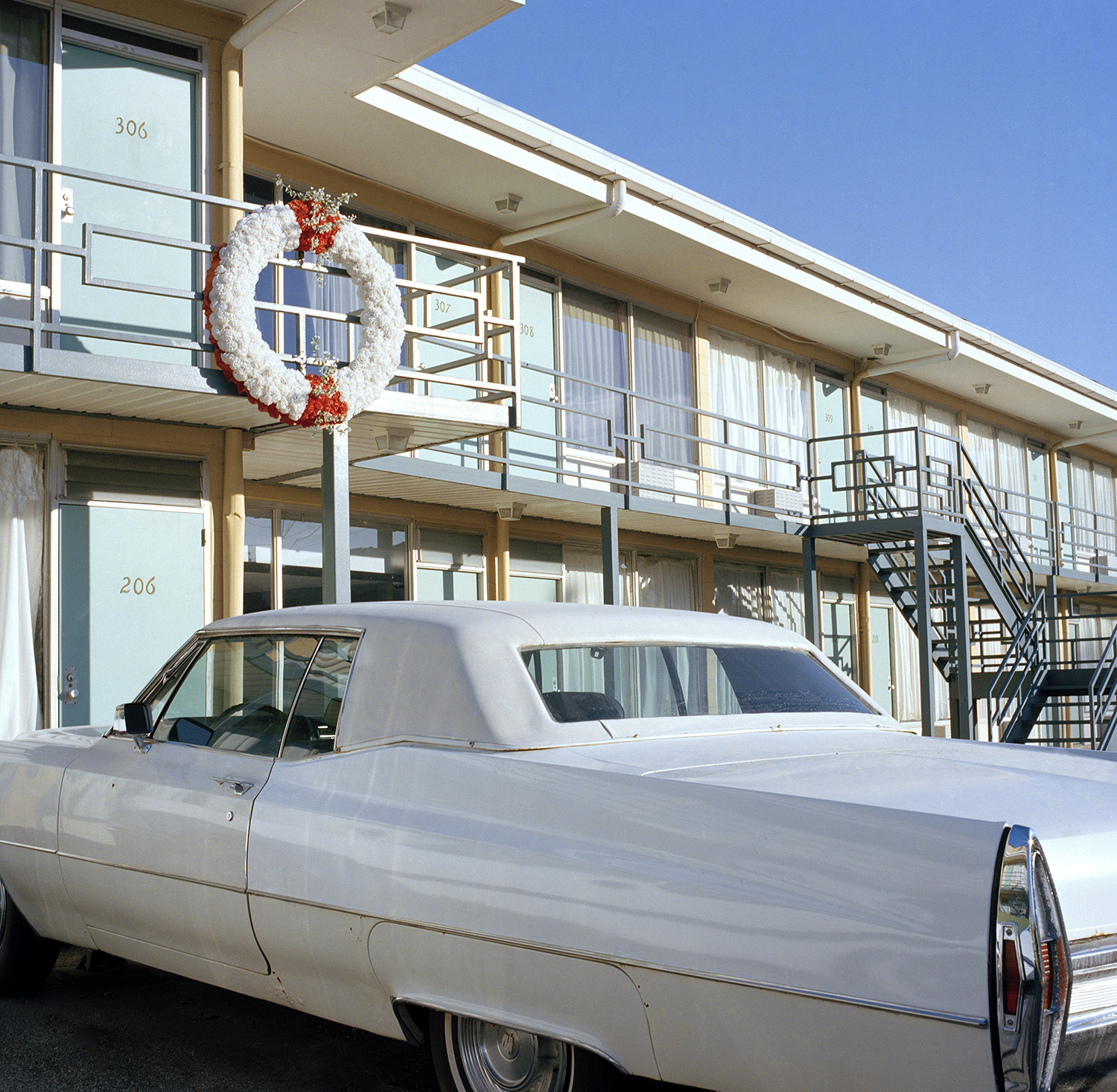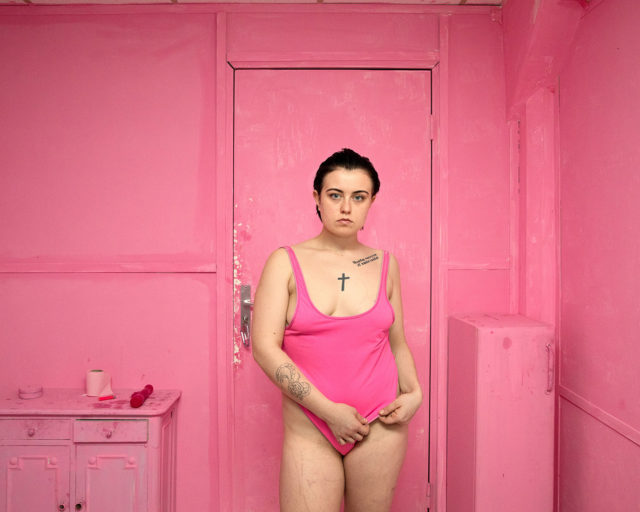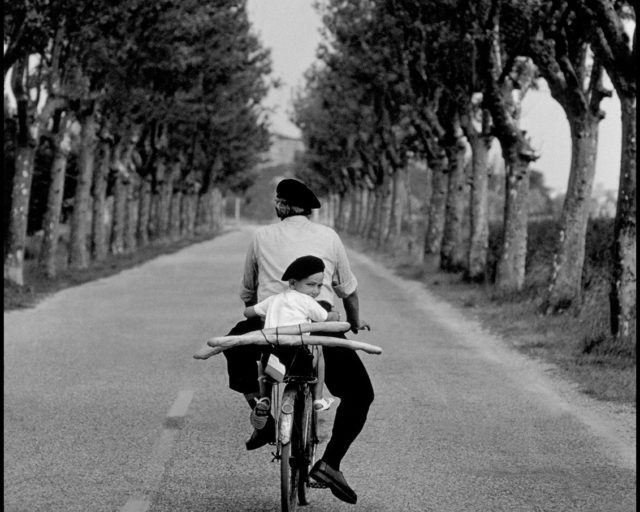11 Photographers Reflect on Images of Solidarity
How can photographs represent solidarity? From Bruce Davidson’s iconic images of the Civil Right Movement to Richie Shazam’s coverage of the massive Black Trans Lives Matter march in Brooklyn last month, the act of solidarity can be seen in these demonstrations of unity in the face of adversity and oppression. But solidarity is also captured in moments of community and connection, as seen in the work of Chien-Chi Chang and Denise Stephanie.
We’re excited to share Solidarity: The Magnum Square Print Sale in Collaboration with Vogue, which brings together images from legendary photographers that reflect on the power of togetherness in tumultuous times.
For seven days only, you can acquire these signed and estate-stamped, museum-quality images for $100 each. For the duration of this sale, Magnum and Vogue photographers will donate 50% of their proceeds to the National Association for the Advancement of Colored People (NAACP). When you purchase through Aperture’s affiliate link, you directly help support not only the artists, but also Aperture’s programming, publishing, and operations.
Selected by Aperture’s editors, here are 11 highlights from the Magnum Square Print Sale.

Chien-Chi Chang, Immigrants sleeping on a fire escape to avoid summer heat, New York City, 1998
Courtesy the artist/Magnum Photos
Chien-Chi Chang
“Solidarity is a word that is usually written large. To some, it might mean a great victory by the people. But I have seen it in smaller settings. On the hottest night of a New York summer, in a tenement building by the Manhattan Bridge outside rooms too sweltering to sleep in, these men found—and shared in—a sense of solidarity on a fire escape. The goal was not grand. They just yearned for a breeze.” —Chien-Chi Chang

Miranda Barnes, Lorraine Motel, Memphis, 2018
Courtesy the artist/Vogue
Miranda Barnes
“This photograph was taken for the fiftieth anniversary of Dr. Martin Luther King Jr.’s assassination for the New York Times in 2018. It was my first assignment through the newspaper, as well as my first time in Memphis. The experience taught me a great deal on the
importance of research in relation to photography, photographing an assignment alone, and the responsibility you have as the person with the camera. Within the theme of solidarity, this photo resonated, as I believe it is important to reflect on moments of history that have been
whitewashed. Acknowledgment and unlearning are critical to the current movement, and they begin from within.” —Miranda Barnes

Enri Canaj, A small boat with refugees and migrants reached safely the Greek coast, It was hard to get the boat to land because of the bad sea, Lesbos, Greece, October, 2015
Courtesy the artist/Magnum Photos
Enri Canaj
“It is always the right time for our strength to be seen. No matter what happens, we should never forget solidarity, which lightly bears our sorrows and joys like a lifeboat, carrying us smoothly and safely towards the next port.” —Enri Canaj

Bruce Davidson, The Selma March, Alabama, 1965
Courtesy the artist/Magnum Photos
Bruce Davidson
“This photograph was taken during the 1965 protest marches from Selma to the Alabama State Capitol in Montgomery. Martin Luther King Jr. led a group of African American, nonviolent marchers to exercise their constitutional right to vote, in defiance of segregationist repression. This was a watershed moment in the Civil Rights Movement. I came across this young demonstrator, wrapped in a flag, protesting racism; behind him is Father Smith of San Antonio, a white Catholic priest who protested against injustice for most of his life.” —Bruce Davidson

Lua Ribeira, Los Afortunados, Melilla, Spain, 2019
Courtesy the artist/Magnum Photos
Lua Ribeira
“This photograph makes me think about bridges, and the extent to which the origins of our issues reside on an illusion that we are separated. Carlos Skliar writes in his essay ‘The Fragile Look’: “to eliminate judgement is no easy task and, despite this, it is exactly what should be done, everything that would have to be done from now onwards so the world could be different and become pure childhood—or pure abnormality. That is: it doesn’t inevitably progress towards self-destruction, but rather, it would lead to the freedom of time and the precious uselessness of the actions undertaken, those actions that lie far from the benefit of profit-making and the trade of bodies and souls.” —Lua Ribeira

Denise Stephanie, In Your Hands, Brooklyn, 2018
Courtesy the artist/Vogue
Denise Stephanie
“The year 2020 has reminded us that human connection is one of life’s greatest treasures. At first, we were forced to be ‘socially distant’ in response to a global pandemic. We substituted FaceTime and Zoom meetings for in-person interaction and discussion. We found ways to cope and attempted to fill the gaps. Virtual communication has been the bridge to strengthen our relationships, show support for one another, and bring light to what haunts us. Then, triggered by tragic and chronic injustice, we covered our faces but joined our hands across the world in solidarity with Black voices, for Black lives. We leveraged digital platforms to turn conversations into action. Through our resilience, we created a new normal but acknowledged that there is no substitute for the human touch. In this double-exposure image, these faceless, melanated women stand together, supporting one another, joined by the same personal touch we have been missing. They remind us that through compassion, our bonds are unbreakable.” —Denise Stephanie

Elliott Erwitt, Valencia, Spain, 1952
Courtesy the artist/Magnum Photos
Elliott Erwitt
“The work I care about is terribly simple. I observe, I try to entertain, but above all I want pictures that are emotional. Little else interests me in photography. Today, so much is being done by unemotional people, or at least it looks that way . . . I mean, work that’s fascinating and fun and clever and technically brilliant. But if it’s not personal, then it misses what interesting photography is about.” —Elliott Erwitt, in Personal Exposures, 1988

Sohrab Hura, Pati, India, 2010
Courtesy the artist/Magnum Photos
Sohrab Hura
“I never quite understood what solidarity meant until I went to Pati for the first time in 2005. Pati is a small village block in Madhya Pradesh in central India. Coming from a bigger metropolitan city like New Delhi, I witnessed and experienced solidarity in a way that felt like a life-changing experience—I guess that is what happens when you have the privilege of not really feeling the immediate need for it yourself, and it only remains a sort of a grand gesture that you might extend on to others. It was here that for the first time, I experienced a collectiveness unlike anything else. It was also here that I learnt that solidarity could even exist in the act of stepping back and listening.” —Sohrab Hura
In addition to the donation to the NAACP, Sohrab Hura’s proceeds from the sale of this print will be used to support Jagrit Adivasi Dalit Sangathan (JADS), a grassroots union formed by people in Pati to fight for basic rights, including the right to work in dignity.

Alex Webb, Erie, Pennsylvania, 2010
Courtesy the artist/Magnum Photos
Alex Webb
“I keep returning to these words of James Baldwin, which seem as apt today as when he wrote them nearly sixty years ago: ‘Not everything that is faced can be changed, but nothing can be changed until it is faced.’” —Alex Webb

Richie Shazam, Tell Your Friends to Pull Up, New York City, 2020
Courtesy the artist/Vogue
Richie Shazam
“Through my artistic expression, I’ve learned about myself and was able to learn about others. My photography lets me tell stories, send but also transcend messages. My work connects me to who I am, where I come from, and most of all, those around me. Pride is about celebrating our ability to stand up for ourselves. This year, we are called upon to stand up and against the violence and hate thrust onto so many Black and brown bodies. Attending the Black Trans Lives Matter march in Brooklyn was a moving, historical moment.” —Richie Shazam

Ronan McKenzie, Our Place, Los Angeles, 2019
Courtesy the artist/Vogue
Ronan McKenzie
“Father Jamaiel and daughter Akua sit at their table bathed in sunlight, creating time to talk to each other. Within my work, I often explore connection, family, relationships, and communication; I aim to present the love, strength, and support within Black family and friendship that are rarely projected outward but always felt. This image is special to me, as it is a real documentation of true listening and the flood of light, acceptance, beauty, and happiness that comes with it.” —Ronan McKenzie
The Magnum Square Print Sale in Collaboration with Vogue is available now through Sunday, August 2, 2020 at 6:00 p.m. EDT. For seven days only, collect museum-quality, 6-by-6-inch square prints for $100 each—with Magnum and Vogue photographer’s donating 50% of their proceeds to the NAACP. By using this link to make your purchase, you directly help support not only the artists but also Aperture’s programming, publishing, and operations.


























